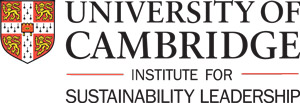
29 May 2014
Urban areas most at risk from Climate Change
Bonn, Germany, 29 May 2014: Cities account for 37–49% of global greenhouse gas emissions and urban infrastructure accounts for over 70% of global energy use. This is just one of the facts found in the “Climate Change: Implications for Cities - Key Findings from the Intergovernmental Panel on Climate Change Fifth Assessment Report (Cities Summary) – drawing attention to the need for climate change mitigation and adaptation.
The Cities Summary is one of thirteen reports that summarize different sector findings of the Fifth Assessment Report (AR5) of the Intergovernmental Panel on Climate Change (IPCC). ICLEI President David Cadman stressed the relevance for integrated climate action at the local level, a process led by local governments in partnership with business, industry and civil society. “This Cities Summary succinctly summarizes the key implications for urban areas. It is a must read for all local decisionmakers”, said Cadman.
The role of local governments in driving community emissions reduction and protecting their inhabitants and infrastructure against the impacts of climate change is central to effective climate policy. The briefing, published jointly by ICLEI, and the University of Cambridge’s Institute for Sustainability Leadership and Judge Business School, with the support of the European Climate Foundation, demonstrates the urgency for climate change mitigation (and low emission development) as well as adaptation:
• Many emerging climate change risks are concentrated in urban areas.
• Climate change impacts on cities are increasing.
• The world’s urban population is forecast almost to double by 2050, increasing the number of people and assets exposed to climate change risks.
• Steps that build resilience and enable sustainable development in urban areas can accelerate successful climate change adaptation globally.
• The greatest potential for mitigating greenhouse gas emissions may lie in rapidly developing cities in industrializing countries.
Nikki Bartlett from the University of Cambridge Institute for Sustainability Leadership said : “The IPCC’s analysis clearly shows that action in urban centers is essential to successful global climate change adaptation and mitigation, as these areas hold more than half the world’s population and most of its built assets and economic activities. Decisions made at the city level can deliver real synergies, becoming more resilient to climate impacts while also seizing opportunities for lowercarbon living.”
The Cities Summary also outlines the effects that climate change will have on urban life. Sea levels could rise one meter by the end of the century, major crop yields may decrease, drought could reduce freshwater resources and extreme weather events are set to increase. The author Rian van Staden stated “It is essential to explore ways to improve resilience of local communities – considering infrastructure, people, environment, food, and many other aspects that encompass local communities. Cities are starting to explore solutions, also sharing with and learning from one another. ICLEI and other city networks have a key role to play in this area to supporting local governments with guidance and tools.”
The next two decades present a window of opportunity for accelerated mitigation in urban areas, as a large portion of the world’s urban areas will be developed during this period. Solutions such as lowcarbon technologies, low-carbon transport, energy efficiency and retrofitting buildings need to be adopted today. These steps towards resilience and enabling sustainable development in urban areas can support successful climate change adaptation globally.
Over 64% of us (the world population) will live in cities by 2050. We need to act now to change tomorrow.




